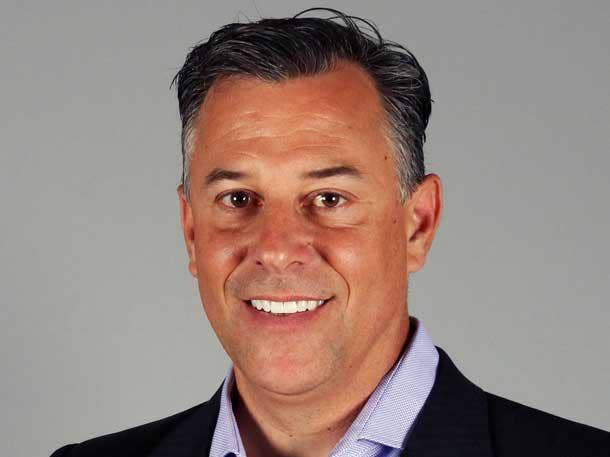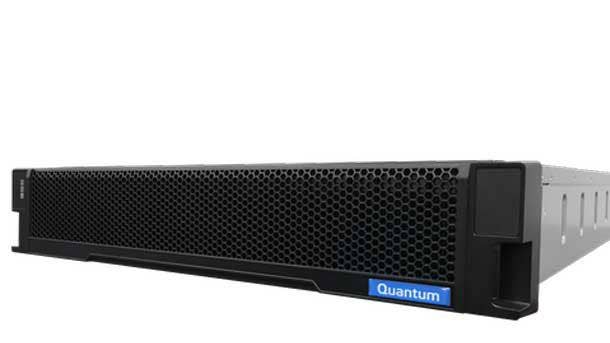Quantum CEO Jamie Lerner: Relisting On Nasdaq, Returning To Profitability, Refocusing On Video
Jamie Lerner tells CRN that 18 to 24 months ago Quantum was at risk, but serious cost-cutting combined with a solid refocus on video technology and channel enablement helped it return to profitability and, as of this coming Monday, move to the Nasdaq exchange.

Quantum On The Road To Recovery
It used to be that when one thought of tape the company that came to mind was Quantum—one of the traditional highfliers of the tape storage market. Quantum today, however, says that while it is still a tape automation manufacturer, it also has morphed into a leader in the video-focused data storage business with hardware and especially software for handling almost every part of the video process besides the actual video production software itself.
That metamorphosis came as Quantum went through rough times after being delisted from the New York Stock Exchange and being the subject of a U.S. Securities and Exchange Commission investigation, which led many industry watchers to wonder if the company had a future.
How things have changed. The San Jose, Calif.-based company is now profitable, and Monday expects to be uplisted, or relisted, on the Nasdaq. The past few months also has seen a surge in new non-tape hardware and software offerings, including its F-series all-NVMe high-speed video processing platform, new video surveillance technology for high-speed capture and recording of video, its R-series ruggedized video surveillance technology for use cases at the edge, major updates to StorNext file system, and a huge push around archiving software. And all those products are monitorable from the cloud and fully operational from the cloud to help solution providers build services and recurring revenue.
Jamie Lerner, Quantum's chairman and CEO, talked with CRN about Quantum's financial recovery, new technology focus and new channel focus, and hinted about what's to come.
Here’s what Lerner had to say about these issues and more.

So, Jamie, what's happening at Quantum?
The news is that we're getting relisted, or uplisted, on the Nasdaq. And I think the story is what we had to do to get here. About 18 to 24 months ago, Quantum's future was definitely at risk. We definitely gave our channel, and our customers and investors, a lot of reason to pause. The company was losing money, had SEC investigations, had a cash crisis. [And] we hadn't released and certainly were not doing heavy investment into new products and hadn't really launched a significant new product offering in close to 10 years. There was heavy management turnover. There were just literally all the things that would cause the channel to pause, would cause customers to pause. And what was complicating that situation was we really had a short window to make some key decisions. ...
When I first got here [in July 2018] and started speaking to our customers and our top channel resellers, they were frustrated in and around the fact that we had some of the best video infrastructure technology. We had some of the best video storage technology, some of the best storage-area networking technology, network-attached storage, archival technology. We had so much technology for anyone who was handling large amounts of video. And they were saying, if you could just get that right.

What was your strategy?
We said we've got to make this company leaner. We've got to make it profitable. We've got to get it growing. We've got to prove that we can innovate and launch new products. And it all has to be around this galvanized strategy that our goal is to be the leader in video and video-like infrastructure at the high-speed end of movie and TV making, genomics, video surveillance, all the high-speed video analytics, video visual effects. We want to lead in the high-speed area.
But also, movies like ‘Star Wars’ and your great TV shows, they're kept forever. So once they're created, we need to be able to keep them and protect them for decades. And we thought we could lead on both ends of that spectrum. And if you fast forward, we really galvanized ourselves around all things video—whether it's satellites, autonomous vehicles, video surveillance, medical imagery, military and tactical imagery, and clearly media and entertainment. Our channel partners and our customers made this clear: 'This is what you, Quantum, do better than anyone else.'
How did you do that?
We had to do some pretty serious work to get to where we could make the company stable and really win back the trust of our channel. And so we took $70 million of cost out of the business on an annual basis. And we were able to do that while actually stabilizing sales—sales were dropping continually—we actually stabilized and began to grow our sales. And in doing those two things, we returned the company to profitability. And we're announcing that we generated over $4 million of net income. So we’re not just EBIDTA-positive, but we're GAAP-net-income-positive, or cash-flow-positive. The company's in a very healthy place. But you need to have more than just a healthy balance sheet. You’ve got to give the channel something new to sell.

How does Quantum's push into the video data management and video surveillance markets differ from the corporate-focused storage Quantum traditionally offered?
[Video] doesn't come in from a data center. It's not like corporate data. It's coming off a movie set, an autonomous vehicle, a drone or a satellite or a genomic sequencer. And the data comes in quickly. And that's really where we use our StorNext products, [for] very high-speed video ingest, high-speed analysis, high-speed modification of video, and high-speed egress and play-out. And then, as it moves up that high-speed environment and the movies or the asset is created [and] played out, we have a set of products, both object technology as well as tape and cloud methodology, that can archive those assets for many years.
So we have products from the edge to the high-speed core to the long-term archive, and basically manage the video life cycle end to end. Increasingly over the next several years, we'll be moving much more into the software layers above that that handle everything from video cataloging, video analytics, video manipulation and video search, and will be building a lot of the software management technologies that would accompany the core storage app.

You just said Quantum will be moving more into the software side of video. Could you see Quantum maybe moving into video production software, or is that going to be the ceiling?
That is undecided. More close to our radar are two classes of software. One is data management. Corporate data is created in an Oracle database or some kind of database, and lives there its whole life, whereas videos are very mobile. They move onto the cloud, they move off the cloud, they get edited on a workstation, handed to another workstation. So we want to put a lot of effort into data management. Where are these millions of files that a customer has? Where are they backed up to? Where are they replicated to? What are they sitting on? Are they on a high-speed or a low-speed medium? Where should they be?
[The] other category would be media libraries. How do I search for [a video]? What is it? How do I find a face? How do I find an object? How do I look for a certain dialogue of text? So rich analytics, searching, and cataloging of video in those two areas, data management and media library, are probably two of the shorter-term focuses that we're moving toward.

While many think of Quantum as a tape vendor, so far you've hardly referred to tape. Does this emphasis on Quantum moving toward a video focus mean that you're pulling out of the traditional tape storage market?
No. We still provide tape products. But the emphasis for us is much more on automation software. For example, when a genomic sequence is being run, you want it to be in a very, very fast place, not just on StorNext, but on SSDs or NVMe, the fastest technologies you can get. But then once it's done, it might reside on an object store system for a while. You're keeping it, but it's still fairly easy to access. And [when there isn't] much activity on the genome, it might then reside on tape. And for emphasis, it's more on the analytic and policy software that is saying, ‘Where's the right place for this piece of video at this time?’ It might be the cloud. It might be tape. It might be object, it might be a file system. And we're focusing on the software that is placing it at the right place at the right time. ... I'm really moving our emphasis away from the hardware tier, even away from the software-defined storage tier, and really to those policy tiers that I think are the strategic control points of where is the most cost-effective place to store this video during this stage of its life cycle.
Is this bringing Quantum to compete in new markets?
What it's doing is making us more competitive. We are starting to differentiate. We've always been known as having really, really fast storage with StorNext. And we've had low-cost storage and very resilient, very safe long-term archive technology. But to compete, all the emphasis is moving to the software layer. How easy is the product to use, how easy is the software? How cloud-connected is it? Can we run your software on premises? Can we run in the cloud? Can we move data fluidly back and forth? And can the system move data around our enterprise and on to the cloud automatically? And what are all my assets? Now that you have so many tiers of storage, and you have the cloud, I do think asset management is becoming a real issue. ...
And I think that not just storing the data but helping you place it in the right place, understand where it is, is making us much more competitive against the traditional storage companies that really don't have a specialized focus on video. It's allowing us to differentiate from them.

Quantum said it is 'uplisting' to the Nasdaq. What does that mean?
We're now moving up from the OTC [over the counter] pink [sheets], which is not considered a national exchange, and we're being uplifted to the Nasdaq, which is a national exchange. …
I had no idea about what any of this stuff was. Most people go their whole career without having to know about any of this stuff because they are things that seldom happen.
Well, you definitely learned the hard way.
We're celebrating our, 'We Came Out The Other Side,' which I would say doesn't happen to all companies in this situation. We came out the other side. Kind of surprisingly quickly in this financially healthy state, which I think has a lot of people surprised and has been helping lead the run up in the stock.

Along with the uplifting and the refocusing of Quantum's market, did Quantum take any outside investment?
We did refinance the company about a year ago, and we raised about $165 million of term debt, and then $45 million in a short-term revolver, for a total of $210 million in debt. So we are well financed from that perspective. And most importantly, we've got a real currency in our stock now that's fueling our growth as well. And we're generating cash from our operation. So we're feeling pretty healthy from that point of view.
You talked about taking $70 million in costs out. What costs? How did you do that?
We did a pretty deep study of our business. And we found in many areas, we were just overstaffed, we were just overinvesting. We had investments that, under analysis, were not returning money to us. Really, it was financial prudence. ... When you focus and have a clear strategy, which for us is video and video-like data, anything that didn't align to that strategy just was no longer a focus. And that also enabled us to sharpen our pencil on what we were going to do. And there was just a lot of things that we effectively could stop doing, when we had the rules. It's got to be video-focused. And it's got to be generating cash. And it's got to be a positive contributor to our business.

As Quantum refocuses its future, what are some of the big changes you're doing on the channel side?
I don't think the channel has gotten the best of Quantum. I don't think we've done the work that we could've done or should've done for our channel. And so one of the things that we're investing in and focusing on is training. Training our channel technically. Training them on our new products. Training them on what makes our traditional products so special. Training them on how to implement the technology. Training them how to price it, design, implement it.
Because our traditional training was limited, I think we had a model where the channel would find an opportunity, but it took Quantum to do all the technical work. And our channel partners don't want that. Our channel partners want to be able to find an opportunity, size the opportunity, quote the opportunity, design the infrastructure, and ultimately do the implementation. That's going to be the highest value. That's where you're going to generate the most margin.
So in other words, the emphasis is on shifting your existing channel partners rather than building out a new type of channel partner.
For people working in video use cases, I don't think it takes very long to find us, know about us, know our specialty in this area. Finding us is not the hardest thing. The hardest thing is, we've got a large portfolio of products with a lot of features and capabilities. So, from when you first find us, the mountain to climb is there's lot of technology to learn, how you competitively differentiate, how you install these things, how you quote them. That is actually I think the longest pole in the tent. We've got plenty of people finding us. People are coming to us. Customers are referencing us. I think that is not our challenge today. The challenge is how do we enable the channel? When new people find us, how can we enable partners to quickly go out and start quoting, start doing deals? And I think all of this comes down to enablement and training.